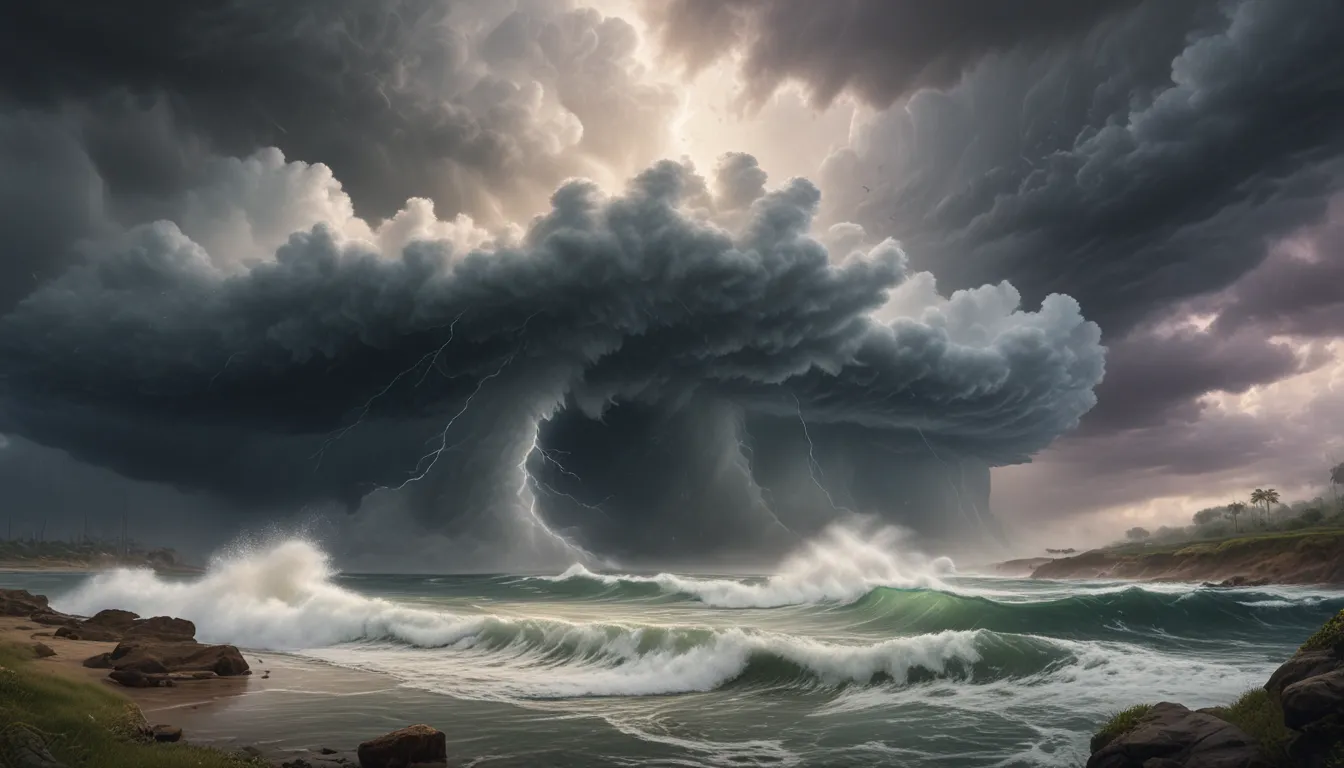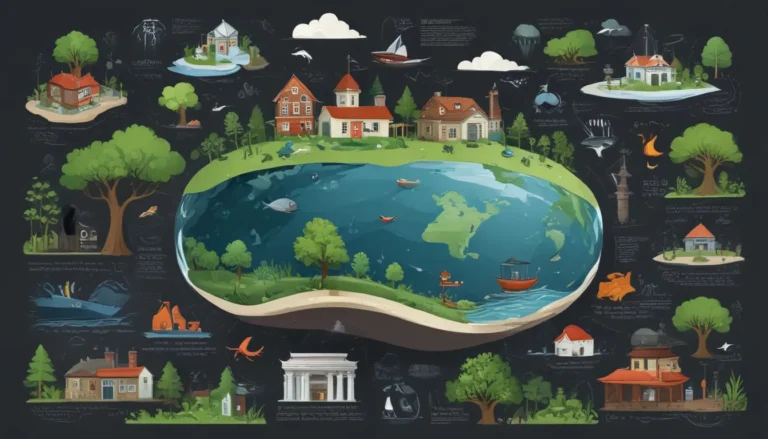A Note About Images: The images used in our articles are for illustration purposes only and may not exactly match the content. They are meant to engage readers, but the text should be relied upon for accurate information.
Cyclonic storms are remarkable natural phenomena that have a profound impact on our planet. From their formation in the warm ocean waters to their devastating effects on land, these swirling storms, known as hurricanes, typhoons, or cyclones, are a force to be reckoned with. In this article, we will delve into ten astounding facts about cyclonic storms that shed light on their immense power and influence on our world. Join us on this journey as we unravel the mysteries of these awe-inspiring weather events.
Understanding Cyclonic Storms: A Closer Look
- Cyclones, hurricanes, and typhoons are all types of cyclonic storms.
-
In different regions, these storms are known by various names such as hurricanes in the Atlantic and Northeast Pacific, typhoons in the Northwest Pacific, and cyclones in the Indian Ocean and South Pacific. Despite the naming differences, they all refer to the same swirling weather phenomenon characterized by intense winds.
-
Cyclonic storms are fueled by warm ocean waters.
-
The energy needed to power cyclonic storms comes from the warm waters of the ocean. As the air above the ocean surface heats up, it rises, creating an area of low pressure that initiates a rotating system. The moisture from the warm waters contributes to cloud formation and precipitation within the storm.
-
Cyclonic storms can reach incredible speeds.
- With wind speeds of up to 200 miles per hour near their center, cyclonic storms are capable of causing widespread destruction. The high-speed rotation of these storms can tear apart buildings and uproot trees in their path, leaving a trail of devastation in their wake.
The Astonishing Characteristics of Cyclonic Storms
- The eye of a cyclonic storm is relatively calm.
-
Surprisingly, within the eye of the storm, conditions are tranquil. The winds are light, the skies clear, and the temperature warmer compared to the violent conditions in the eyewall surrounding the eye. This calm center provides a brief respite before the storm’s fury resumes.
-
Cyclonic storms can span over hundreds of miles.
-
These massive storms are not confined to a small area but can stretch over hundreds of miles in diameter. The effects of cyclonic storms extend far beyond their eye and eyewall, impacting a vast region with strong winds, heavy rainfall, and dangerous storm surges.
-
The Saffir-Simpson Hurricane Wind Scale measures the intensity of cyclonic storms.
- Meteorologists use this scale to categorize cyclonic storms based on their maximum sustained wind speeds, ranging from Category 1 to Category 5. Each category provides an estimation of the potential damage expected from the storm, helping communities prepare for its impact.
Navigating the Impact of Cyclonic Storms
- Cyclonic storms can create a phenomenon called a storm surge.
-
The storm surge occurs when the powerful winds of a cyclonic storm push ocean waters towards the coastline, leading to flooding in coastal areas. Combined with heavy rainfall, storm surges can cause catastrophic flooding, posing a significant threat to coastal communities.
-
Cyclonic storms can have secondary effects.
-
Apart from the immediate impact of high winds and heavy rainfall, cyclonic storms can disrupt ecosystems and cause damage to coral reefs, coastal vegetation, and marine life. The storm activity can also result in coastal erosion, altering the landscape of coastlines.
-
Climate change may impact cyclonic storm frequency and intensity.
- Research suggests that as global temperatures rise, cyclonic storms may become more frequent and intense. Warmer ocean waters provide additional energy for these storms to develop and strengthen, posing new challenges in forecasting and managing their impacts.
Embracing the Role of Cyclonic Storms in the Earth’s Climate
- Cyclonic storms play a crucial role in the Earth’s climate system.
- Despite their destructive nature, cyclonic storms help transport heat from the tropics to the polar regions, regulating global temperature patterns. They also contribute to the redistribution of ocean heat, influencing ocean currents and marine ecosystems.
Unveiling the Insights: A Deeper Dive
Cyclonic storms are nature’s powerhouses, showcasing the extraordinary forces at play in our environment. From their formation in warm ocean waters to the devastation they can cause on land, these storms captivate us with their raw power and complexity. By understanding the dynamics of cyclonic storms and their impact on our planet, we can better prepare and mitigate their effects on vulnerable communities.
Exploring Further: FAQs
- What causes cyclonic storms?
-
Cyclonic storms are primarily fueled by warm ocean waters and atmospheric conditions that create a rotating system of intense winds.
-
How long do cyclonic storms last?
-
The duration of a cyclonic storm varies based on its size, intensity, and environmental factors, ranging from days to weeks.
-
Is there any way to predict cyclonic storms?
-
Meteorological agencies use advanced forecasting techniques to predict the formation, track, and intensity of cyclonic storms, enabling communities to prepare and respond.
-
Are all cyclonic storms destructive?
-
While cyclonic storms vary in intensity, some can be catastrophic, causing significant damage, flooding, and loss of life. Vigilance and preparedness are essential during these events.
-
How can we protect ourselves during a cyclonic storm?
-
Having an emergency plan, staying informed, and following evacuation orders are crucial steps to ensure safety during a cyclonic event.
-
Are cyclonic storms increasing in frequency and intensity?
-
Evidence suggests that climate change may lead to an increase in the frequency and intensity of cyclonic storms, posing greater risks to coastal areas.
-
Are cyclonic storms only found in specific regions?
-
Cyclonic storms can occur in various regions globally, with tropical and subtropical areas being most prone to their formation.
-
How are cyclonic storms named?
-
Meteorological agencies name cyclonic storms to aid in tracking and identification, with different regions using specific naming systems.
-
How can we contribute to cyclone preparedness and relief efforts?
-
Supporting disaster management organizations through donations and volunteering can help communities affected by cyclonic storms recover and rebuild.
-
Can climate change impact cyclonic storm patterns?
- Ongoing research aims to understand the influence of climate change on cyclonic storm patterns, with considerations for potential increased intensity and frequency.
Conclusion: Respecting the Power of Cyclonic Storms
In conclusion, cyclonic storms are extraordinary forces of nature that demand our attention and respect. As we unravel the mysteries of these powerful weather events, we gain a deeper appreciation for the intricacies of our environment. By studying and understanding cyclonic storms, we equip ourselves with the knowledge needed to forecast, prepare for, and mitigate their impact on vulnerable regions. Let’s continue to explore the wonders of cyclonic storms and embrace the awe-inspiring forces that shape our world.
FAQs: Your Guide to Cyclonic Storms
Have burning questions about cyclonic storms? Explore our FAQ section to find answers to common inquiries and deepen your understanding of these remarkable weather phenomena.
As we journey through the realm of cyclonic storms, let’s embrace the wealth of knowledge and insights they offer. By exploring the intricacies of these natural powerhouses, we can gain a deeper understanding of our world and nurture a sense of wonder for the forces at play. Join us in unraveling the mysteries of cyclonic storms and embarking on a captivating exploration of nature’s might.






